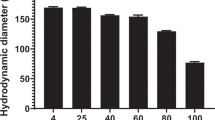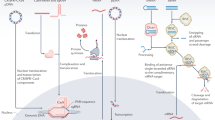Abstract
We have compared the ability of several nanosized bioceramic particles including negatively charged silica (SiO2), neutrally charged hydroxyapatite (HA) and positively charged zirconia (ZrO2) nanoparticles as non-viral vectors for efficient in vivo gene delivery. A mixture of highly monodispersed aqueous suspension of HA or SiO2 nanoparticles, coated with protamine sulfate (PS), complexed efficiently with plasmid DNA and significantly enhanced transgene expression in vitro. In comparison, ZrO2 nanoparticles gave poor transfection efficiency under similar conditions tested. It was also determined that, under the same conditions, PS-SiO2-DNA, but not PS-HA-DNA-nanoplexes, were able to mediate efficient transgene expression in vitro in the presence of 50% serum. Intraperitoneal injections of PS-SiO2-luciferase DNA nanoplexes targeted the highest level of transgene expression in the spleen of recipient mice that lasted for more than 48 h. Injection of PS-SiO2-pNGVL-hFLex-MUC-1 nanoplexes was able to mediate the production of Flt-3L in the sera of recipient mice. Simultaneously, the production of Flt-3L was accompanied by the stimulation of IL-2 and interferon-γ (IFN-γ). Most importantly, the injection of PS-SiO2-pNGVL-hFLex-MUC-1 nanoplexes could mount potent anti-tumour specific immune responses that led to the subsequent regression of parental tumor cells containing the muc-1 determinant.
This is a preview of subscription content, access via your institution
Access options
Subscribe to this journal
Receive 12 print issues and online access
$259.00 per year
only $21.58 per issue
Buy this article
- Purchase on Springer Link
- Instant access to full article PDF
Prices may be subject to local taxes which are calculated during checkout




Similar content being viewed by others
References
Wagner E, Kircheis R, Walker GF . Targeted nucleic acid delivery into tumors: new avenues for cancer therapy. Biomed Pharmacother 2004; 58: 152–161.
Wang Y, Yuan F . Delivery of viral vectors to tumor cells: extracellular transport, systemic distribution, and strategies for improvement Ann. Biomed Eng 2006; 34: 114–127.
Niidome T, Huang L . Gene therapy progress and prospects: nonviral vectors. Gene Ther 2002; 9: 1647–1652.
Lawson C . Strategies for gene transfer to solid organs: viral vectors. Methods Mol Biol 2006; 333: 175–200.
Glover DJ, Lipps HJ, Jans DA . Towards safe, non-viral therapeutic gene expression in humans. Nat Rev Genet 2005; 6: 299–310.
Larin SS, Georgiev GP, Kiselev SL . Gene transfer approaches in cancer immunotherapy. Gene Ther 2004; 11 (Suppl 1): S18–S25.
Jackson DA, Juranek S, Lipps HJ . Designing nonviral vectors for efficient gene transfer and long-term gene expression. Mol Ther 2006; 14: 613–626.
Khalil IA, Kogure K, Akita H, Harashima H . Uptake pathways and subsequent intracellular trafficking in nonviral gene delivery. Pharmacol Rev 2006; 58: 32–45.
Yamada T, Iwasaki Y, Tada H, Iwabuki H, Chuah MK, VandenDriessche T et al. Nanoparticles for the delivery of genes and drugs to human hepatocytes. Nat Biotechnol 2003; 21: 885–890.
Mastrobattista E, van der Aa MA, Hennink WE, Crommelin DJ . Artificial viruses: a nanotechnological approach to gene delivery. Nat Rev Drug Discov 2006; 5: 115–121.
Dauty E, Behr JP, Remy JS . Development of plasmid and oligonucleotide nanometric particles. Gene Ther 2002; 9: 743–748.
Luo D, Han E, Belcheva N, Saltzman WM . A self-assembled, modular DNA delivery system mediated by silica nanoparticles. J Control Release 2004; 95: 333–341.
Morita Y, Nakata K, Kim YH, Sekino T, Niihara K, Ikeuchi K . Wear properties of alumina/zirconia composite ceramics for joint prostheses measured with an end-face apparatus. Biomed Mater Eng 2004; 14: 263–270.
Yih TC, Al Fandi M . Engineered nanoparticles as precise drug delivery systems. J Cell Biochem 2006; 97: 1184–1190.
Kumar R, Cheang P, Khor KA . Radio frequency (RF) suspension plasma sprayed ultra-fine hydroxyapatite (HA)/zirconia composite powders. Biomaterials 2003; 24: 2611–2621.
Kumar R, Prakash KH, Cheang P, Khor KA . Temperature driven morphological changes of chemically precipitated hydroxyapatite nanoparticles. Langmuir 2004; 20: 5196–5200.
Nishikawa M, Takakura Y, Hashida M . Pharmacokinetics of plasmid DNA-based non-viral gene medicine. Adv Genet 2005; 53: 47–68.
Read ML, Logan A, Seymour LW . Barriers to gene delivery using synthetic vectors. Adv Genet 2005; 53: 19–46.
Mebius RE, Kraal G . Structure and function of the spleen. Nat Rev Immunol 2005; 5: 606–616.
Fong CL, Hui KM . Generation of potent and specific cellular immune responses via in vivo stimulation of dendritic cells by pNGVL3-hFLex plasmid DNA and immunogenic peptides. Gene Ther 2002; 9: 1127–1138.
Fong CL, Mok CL, Hui KM . Intramuscular immunization with plasmid coexpressing tumour antigen and Flt-3L results in potent tumour regression. Gene Ther 2006; 13: 245–256.
O'Connor TP, Crystal RG . Genetic medicines: treatment strategies for hereditary disorders. Nat Rev Genet 2006; 7: 261–276.
Cho YW, Kim JD, Park K . Polycation gene delivery systems: escape from endosomes to cytosol. J Pharm Pharmacol 2003; 55: 721–734.
Hwang SJ, Davis ME . Cationic polymers for gene delivery: designs for overcoming barriers to systemic administration. Curr Opin Mol Ther 2001; 3: 183–191.
Tan Y, Whitmore M, Li S, Frederik P, Huang L . LPD nanoparticles – novel nonviral vector for efficient gene delivery. Methods Mol Med 2002; 69: 73–81.
Byun Y, Singh VK, Yang VC . Low molecular weight protamine: a potential nontoxic heparin antagonist. Thromb Res 1999; 94: 53–61.
Tupin E, Poirier B, Bureau MF, Khallou-Laschet J, Vranckx R, Caligiuri G et al. Non-viral gene transfer of murine spleen cells achieved by in vivo electroporation. Gene Ther 2003; 10: 569–579.
Pillarisetty VG, Katz SC, Bleier JI, Shah AB, DeMatteo RP . Natural killer dendritic cells have both antigen presenting and lytic function and in response to CpG produce IFN-gamma via autocrine IL-12. J Immunol 2005; 174: 2612–2618.
Chaudhry UI, Katz SC, Kingham TP, Pillarisetty VG, Raab JR, Shah AB et al. In vivo overexpression of Flt3 ligand expands and activates murine spleen natural killer dendritic cells. FASEB J 2006; 20: 982–984.
Acknowledgements
This research was supported by a grant from the National Medical Research Council (NMRC) of Singapore. We thank Ms Kelly YW Chan for technical assistance.
Author information
Authors and Affiliations
Corresponding author
Rights and permissions
About this article
Cite this article
Tan, K., Cheang, P., Ho, I. et al. Nanosized bioceramic particles could function as efficient gene delivery vehicles with target specificity for the spleen. Gene Ther 14, 828–835 (2007). https://doi.org/10.1038/sj.gt.3302937
Received:
Revised:
Accepted:
Published:
Issue Date:
DOI: https://doi.org/10.1038/sj.gt.3302937
Keywords
This article is cited by
-
Oxidative stress-mediated cytotoxicity of zirconia nanoparticles on PC12 and N2a cells
Journal of Nanoparticle Research (2016)
-
Transfection using hydroxyapatite nanoparticles in the inner ear via an intact round window membrane in chinchilla
Journal of Nanoparticle Research (2012)
-
Characteristics of functionalized nano-hydroxyapatite and internalization by human epithelial cell
Nanoscale Research Letters (2011)
-
On the role of the colloidal stability of mesoporous silica nanoparticles as gene delivery vectors
Journal of Nanoparticle Research (2011)



